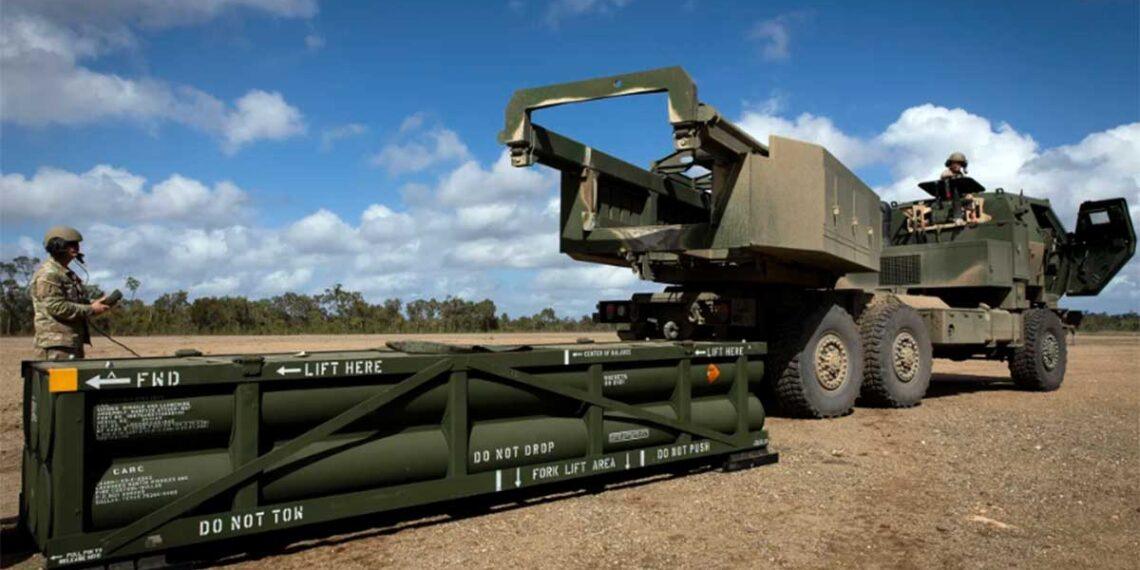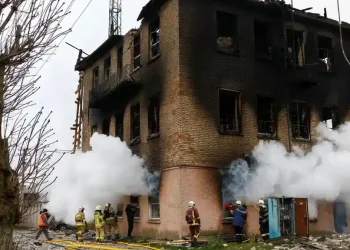Ukraine Fires US-Made Long-Range Missiles Into Russia for the First Time
Ukraine has escalated its military strategy by launching U.S.-made Army Tactical Missile Systems (ATACMS) against a Russian weapons depot in Bryansk, marking the first use of these long-range weapons inside Russian territory. The strike, confirmed by two U.S. officials, signifies a turning point as the conflict reaches its 1,000th day.
A Strategic Shift
The Biden administration recently authorized Ukraine to deploy longer-range U.S. missiles against targets inside Russia, lifting a longstanding restriction aimed at minimizing escalation. The Ukrainian attack occurred just two days after the policy shift, signaling Kyiv’s eagerness to leverage this new capability.
Ukrainian President Volodymyr Zelensky, while neither confirming nor denying the Bryansk strike, stated during a news conference, “Ukraine has long-range capabilities. We now have ATACMS and will use them.”
Details of the Attack
Russia’s Defense Ministry reported that Ukraine fired six ATACMS missiles at 3:25 a.m. local time on Tuesday. Russian air defenses intercepted five of the missiles, while fragments from the sixth caused a fire at a military facility. No casualties or significant damage were reported.
Putin’s Response: Nuclear Doctrine Update
The attack coincided with Russian President Vladimir Putin announcing updates to Russia’s nuclear doctrine. Moscow will now treat aggression by non-nuclear states, in collaboration with nuclear powers, as a joint threat to Russia. The revised policy appears to lower the threshold for deploying nuclear weapons, a move seen as further saber-rattling.
U.S. Authorization and Global Reactions
President Biden’s decision to allow ATACMS use inside Russia reflects a calculated risk to support Ukraine amid intensified Russian offensives. However, the decision followed months of debate among American officials concerned about potential escalation and limited missile stockpiles.
Western allies remain cautious. German Chancellor Olaf Scholz reiterated opposition to supplying Taurus missiles to Ukraine, stating at the G20 summit in Brazil that such actions would be a “mistake.”
North Korea’s Involvement
Adding to the complexity, thousands of North Korean troops have reportedly been deployed to Russia’s Kursk region, a former Ukrainian counteroffensive site. U.S. officials condemned this as a “major escalation” by Moscow.
Ukraine’s Long-Range Strategy
For months, Zelensky has emphasized the importance of long-range weapons in his “Victory Plan” to reclaim Ukrainian territory. The use of ATACMS now gives Kyiv the ability to strike military targets deep within Russia, complementing its arsenal of long-range drones and domestically produced Neptune cruise missiles.
Zelensky praised the decision to supply ATACMS, stating, “Missiles will speak for themselves.”
Russia’s Response and Rhetoric
Russian Foreign Minister Sergey Lavrov denounced the use of long-range U.S. missiles as a “new phase of war.” Despite Putin’s frequent nuclear threats, U.S. officials, including Pentagon Deputy Press Secretary Sabrina Singh, dismissed any indications of imminent nuclear action, labeling the rhetoric as consistent with Russia’s behavior throughout the conflict.
Conclusion
As the war enters its third year, Ukraine’s use of U.S.-made ATACMS underscores a significant escalation in its defense strategy. While Kyiv gains crucial capabilities, the global community watches closely, wary of potential repercussions in this increasingly complex and dangerous conflict.
This article was rewritten by JournosNews.com based on verified reporting from trusted sources. The content has been independently reviewed, fact-checked, and edited for accuracy, neutrality, tone, and global readability in accordance with Google News and AdSense standards.
All opinions, quotes, or statements from contributors, experts, or sourced organizations do not necessarily reflect the views of JournosNews.com. JournosNews.com maintains full editorial independence from any external funders, sponsors, or organizations.
Stay informed with JournosNews.com — your trusted source for verified global reporting and in-depth analysis. Follow us on Google News, BlueSky, and X for real-time updates.














